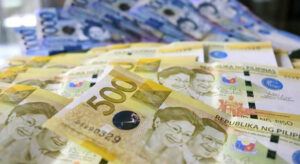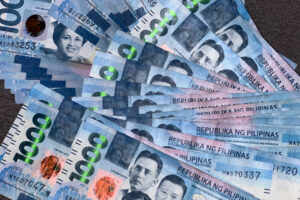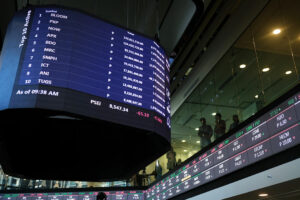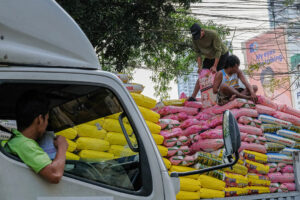Philippine headline inflation steadied in October as slower price increases in vegetables and meat offset higher utility costs during the month, the Philippine Statistics Authority (PSA) said on Wednesday.
PSA data showed that the consumer price index (CPI) stood at 1.7% in October, unchanged from September’s print but eased from 2.3% a year ago.
This was a tad slower than the 1.8% median forecast from a BusinessWorld poll of 17 analysts conducted last week, but within the Bangko Sentral ng Pilipinas’ (BSP) 1.4-2.2% forecast.

October also marked the eighth straight month that inflation fell below the central bank’s 2-4% target band.
In the 10 months to October, average inflation matched the BSP’s full-year target of 1.7%.
Meanwhile, core inflation, which discounts volatile prices of food and fuel, eased to 2.5% from 2.6% in September. Still, it was slightly faster than the 2.4% print in October 2024.
This brought year-to-date core inflation to 2.4%, easing from the 3.1% clip seen in the comparable year-ago period.
Housing, water, electricity, gas and other fuels contributed most to the CPI during the month and posted a 2.7% inflation rate, National Statistician Claire Dennis S. Mapa said.
Electricity alone posted a 4.1% inflation in October, accelerating from the 1.2% clip seen in September.
In October, the Manila Electric Co. hiked the overall electricity rate by PHP 0.2331 per kilowatt-hour (kWh) to PHP 13.3182 per kWh. This means residential customers consuming 200 kWh had to pay an additional PHP 47 in their bill last month.
Meanwhile, inflation for water supply also quickened to 5.7% in October from 5.3% a month earlier.
In September, the Metropolitan Waterworks and Sewerage System okayed the proposed P0.14 per cubic meter (cu.m.) hike for Maynilad and a P0.15 per cu.m. rollback for Manila Water for the October-December period.
Department of Economy, Planning, and Development Secretary Arsenio M. Balisacan said the government’s efforts to manage supply conditions and ensure price stability helped inflation hold steady in October.
“The steady headline inflation rate shows that our coordinated interventions are helping to maintain adequate supplies and keeping essential goods affordable,” he said in a statement. “We remain vigilant in managing risks from weather disturbances, global market volatility, and other domestic factors that may affect prices in the coming months.”
Meanwhile, slower inflation for food and non-alcoholic beverages tempered inflationary pressures in October.
The heavily weighted food and nonalcoholic beverage index eased to 0.5% in October from the 1% clip logged the month earlier.
“Our food basket, food and non-alcoholic beverages, has the biggest weight in the inflation basket at 37.75% more or less,” Mr. Mapa said.
Food inflation slowed year on year to 0.3% from 0.8% the previous month and 3% in October 2024.
This came as inflation for vegetables, tubers, plantains, cooking bananas and pulses eased to 16.6% from 19.4% in September.
Likewise, the PSA recorded slower inflation for meat and other parts of slaughtered land animals in October at 5.2% from 6% a month ago.
However, Mr. Mapa noted that inflationary pressures from food remain as prices of fish and other seafood picked up to 8.2% from 7.9% in September.
Rice prices
Rice inflation remained in the negative for the tenth month in a row at -17% in October from -16.9% in September.
Mr. Mapa said rice prices continued to decline amid increased unmilled rice production in the last quarter of the year.
“Our production is high, but of course, prices in the world market are also starting to drop. So that actually affected, in a good manner, our retail rice prices, because it continues to decline,” he said in Filipino.
Citing PSA data, Mr. Mapa said a kilo of regular-milled rice was sold at an average price of PHP 40.09 in October, dropping by 20.2% from PHP 50.22 a year ago. Well-milled rice was also cheaper at an average PHP 46.49 per kilo, down 15.9% from PHP 55.28 last year. Meanwhile, special rice was priced at PHP 56.39 per kilo last month, falling by 11.8% from PHP 63.97 in October 2024.
“Despite the import ban on rice, the price of the grain was largely stable while meat and dairy prices eased, offsetting the increase in utility rates,” Aris D. Dacanay, economist for the Association of Southeast Asian Nations at HSBC Global Investment Research, said in an e-mailed note.
Earlier, President Ferdinand R. Marcos, Jr. ordered a 60-day freeze on regular and well-milled rice imports from Sept. 1 to Nov. 2 to support local farmers amid the harvest season and to stabilize rice prices.
The suspension has been extended until yearend, with the government eyeing to open an import window in January before reimposing the ban from February to April.
Meanwhile, PSA data also showed that inflation in the National Capital Region (NCR) picked up to 2.9% in October from 2.7% in the previous month and 1.4% in the same month in 2024.
Outside NCR, inflation eased to 1.3% from 1.5% in September and the 2.6% clip a year ago.
Central Visayas still saw the highest inflation print among other regions at 2.6%, while prices in Bangsamoro Autonomous Region in Muslim Mindanao declined the fastest at -1.3%.
Inflation for the bottom 30% of income households declined at a faster pace of -0.4% in October from -0.2% in September. For the 10-month period, it averaged 0.3%, slower than 4.5% a year ago.
Inflation ahead
The BSP still sees inflation settling below its 2-4% target by yearend, citing the recent easing of rice prices in the country.
“Inflation is projected to average below the low end of the target range in 2025, primarily due to the easing of rice prices in previous months,” it said in a statement. “The risks to the inflation outlook are limited as price pressures are expected to ease amid stabilizing global commodity prices.”
However, the central bank said the outlook for domestic economic growth has weakened.
“This outlook reflects in part the impact on business confidence of governance concerns about public infrastructure spending. Indications of slowing demand also reflect lingering uncertainty from the external environment,” the BSP said.
For November, Mr. Mapa said fuel prices will likely drive up inflationary pressures following the latest pump price adjustment.
Oil firms in the country implemented fuel price hikes on Tuesday, amounting to PHP 1.70 per liter for gasoline, PHP 2.70 per liter for diesel and PHP 2.10 per liter for kerosene.
Mr. Mapa said they will continue to monitor the impact of recent typhoons on consumer prices, as well as Mr. Marcos’ earlier directive to impose a price freeze on basic and prime commodities until yearend.
“There are threats to overall food inflation. Some items are increasing, (such as) the price of fish (and) vegetable,” Mr. Mapa said, noting vegetable prices are sensitive to weather conditions.
In a note on Wednesday, Chinabank Research said inflation will likely remain low in the coming months, but noted that pump price adjustments and the weather’s impact on food prices still pose risks.
“We expect overall inflation to remain low for the rest of the year, though upward price pressures may arise from energy — a hefty increase in local pump prices was announced this week — as well as from weather-sensitive food prices,” it said.
Meanwhile, HSBC’s Mr. Dacanay said the benign inflation and clearer rice policies could push the BSP to cut rates by 25 basis points (bps) in December.
“All in all, we think October inflation plus the clarity over rice policies strengthen the case for a December rate cut by the BSP,” he said. “With no issues in inflation, monetary policy has the runway to pump the economy to, hopefully, offset the fiscal fallout brought by a sharp drop in public infrastructure spending.”
Since it began its easing cycle in August 2024, the Monetary Board has cut its key policy rate by 175 bps to a three-year low of 4.75%.
BSP Governor Eli M. Remolona, Jr. has signaled further easing until early next year to support the economy as the ongoing flood control anomalies have hit business sentiment, clouding their growth outlook.
The Monetary Board will hold its last rate-setting meeting this year on Dec. 11. — Katherine K. Chan







 DOWNLOAD
DOWNLOAD















